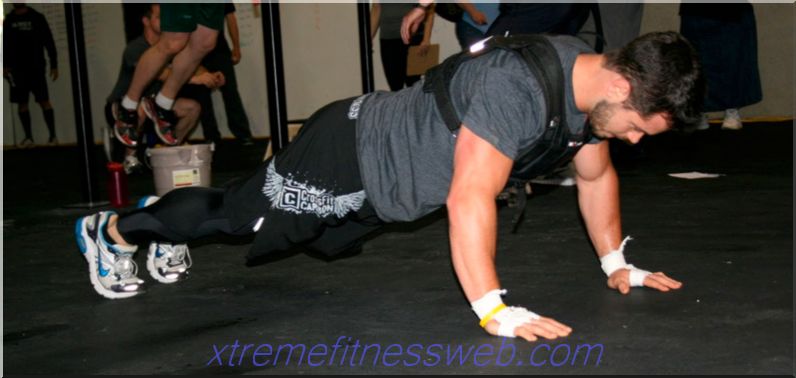
Nausea after exercise is a common problem. It is not always associated with the nature of the load, or disease. Minor disturbances in nutrition, lack of recovery, or individual characteristics of the body can cause an attack. But sometimes a “muddy” state is a sign of health problems. Knowing its causes will help get rid of nausea.
Content
- 1 Main causes of nausea after exercise
- 1.1 Differential pressure
- 1.2 Ailment
- 1.3 Reduced blood sugar
- 1.4 Iron deficiency (anemia)
- 1.5 Heavy food in the stomach
- 1.6 sodium deficiency
- 1.7 Heat stroke
- 1.8 Decrease in blood flow to the gastric mucosa
- 1.9 Poisoning or allergic reaction
- 1.10 Dehydration
- 1.11 Deficiency of carbohydrates, glucose
- 2 What to do when nauseous after exercise "> The main causes of nausea after exercise

Pressure drops
Hypotensive people know the feeling of being overwhelmed after exercise. Symptoms occur quickly:
- Sweating increases;
- Dizzy begins to spin;
- “Shortness of breath” appears;
- Visual perception changes, it may darken in the eyes
Doctors recommend that you monitor the pressure on the training day, and postpone the lesson if there is a problem. You need to get specific recommendations on the preparation of a training plan, nutrition, and drugs from a therapist and sports doctor.
Malaise
Women feel it in the last third of the menstrual cycle. And this is completely natural. Nausea can be a reaction to an increase in the uterus. General unwell well being is caused by lack of sleep, which starts with a cold or headache. In this case, it is better to skip amateur training, and professionals should reduce the load within reasonable limits.
Low blood sugar

A drop in sugar is the problem of losing weight on a low-carb diet. They should take BCA to support the body during a hard workout. Everyone who wants to lose weight should eat balanced and consume complex carbohydrates before exercise. If it is not possible, fruit is allowed half an hour before the start of the lesson, but it is better to refuse juices. They dramatically increase blood sugar levels, and just as quickly "bring them down".
Iron deficiency (anemia)
Persistent nausea and a feeling of "light head" can be symptoms of anemia. After training, the malaise is aggravated. If the problem is recurring, it is worth taking a biochemical blood test, and follow the doctor's recommendations. Typically, iron is prescribed in capsules. The condition is not a contraindication to moderate physical training.
Heavy food in the stomach

A heavy meal can cause nausea. Food does not have time to digest, is in the stomach, and prevents you from engaging in full force. Nausea can be avoided if you take enzymes with a solid meal, or plan your diet so that meals are not immediately before training. The problem recurs, and any healthy food seems "too heavy" "> Sodium deficiency
Sodium is a microelement for maintaining the water-salt balance. His ions are not enough, a person can feel sick. The body "hints" that it would be nice to drink mineral water, or eat salty foods. Sodium is excreted with sweat, with active physical activity - this is a natural process.
Sodium can be taken both additionally, in tablets, or in the form of ordinary table iodized salt. Do not sit on a salt-free diet without medical need, and there will be no nausea
Heatstroke
Overheating is a frequent reaction to classes in poorly ventilated rooms, taking thermogenics and trying to "lose" weight by doing exercises in thermal suits. During heatstroke, nausea is accompanied by vomiting, a person feels very ill, his consciousness is confused, his speech is incoherent, he can “turn off”. In this case, it is necessary to lay the patient so that he does not choke on vomit, loosen clothes, provide airflow and call an ambulance.
Decreased blood flow to the gastric mucosa

This is a common problem among security officials. If you use too tight weight lifting belts, do not unfasten the belt after approaching, then blood circulation may be impaired. And since there is a certain amount of food in the stomach, the body will try to get rid of the unnecessary in the natural way - to tear it out. That is why they do not recommend wearing hard belts in fitness, as well as exercises that require straining in the belt.
Circulatory disturbance is a common problem among lovers of corsets for weight loss and waist reduction. Perhaps this equipment also turns off the oblique muscles of the stomach, but it will be almost inevitable to feel sick from its use. For health's sake, you just need to learn to do the exercises correctly, and not waste time choosing belts.
Poisoning or allergic reaction
Anything can be an allergen, from the spirits of a beautiful neighbor on a treadmill, to phenolic compounds that give out water bottles to some unscrupulous manufacturers. Dizziness and nausea with vomiting, loss of consciousness and swelling are serious symptoms in which the victim should be immediately helped. Allergy sufferers should carry a nebulizer with them, and warn the hall staff about possible health problems.
Dehydration

Water deficiency can be accompanied by convulsions, or "limited" to nausea. When dehydrated in combination with alcohol intoxication on the eve of the athlete vomits bile, there is a metallic taste in the mouth. If dehydration is caused by an improperly organized diet for weight loss (desalinated diet in the hot season), you should immediately give electrolytes, such as "rehydron" or drink "gatoreyd". In case of poisoning, you must call a doctor. If muscle cramps, even minimal ones, begin, the training is stopped, and the athlete is shown to the doctor.
Carbohydrate deficiency
Normally, a person should have some glucose in the blood. Hypoglycemia haunts those on a low-carb diet. Not only can such a diet be hazardous to the health of an unprofessional athlete, but it also contributes to the appearance of nausea during training. The best advice here is to adjust your diet so that the diet creates a slight calorie deficit, and allows you to lose weight, but did not make every workout suffer from nausea.
Those who have removed the gallbladder or who have suffered pancreatitis can feel sick during and after training. In this case, you need to see a doctor for the underlying disease.
Important: if nausea appeared during high-intensity training, against the background of overtraining and overwork, you should seek help immediately. It is known that overloads of this kind can cause rhabdomyolysis, that is, a disease in which catabolic processes literally destroy the body and the excretory system.
What to do when sick after a workout?

To block nausea, you can drink some water or tea, eat something sweet, or take glucose with any sports nutrition drug. This helps, but only if nausea is caused by hypoglycemia.
In the event that a person is sick, but does not yet know about his illness, chocolates do not stop the manifestation of symptoms. Therefore, when folk remedies do not work, it is necessary to seek medical help.
Prevention of nausea after exercise can include the following measures:
- Normally organized food . Fractional meals after 3-4 hours, with plenty of complex carbohydrates before exercise. The last meal before the start of the lesson is approximately 2 hours;
- Reasonable use of supplements . With a strict diet for weight loss, you should take an amino acid complex during training to prevent too rapid loss of nutrients and muscle catabolism;
- Compliance with water balance . Drink at least 30-40 ml of water per 1 kg of body weight. In hot weather, you should drink more, if classes are long or highly intense, it is best to choose isotonic;
- Control of blood composition and competent selection of vitamins, minerals, trace elements, as well as additional sports nutrition products.
Nausea after exercise is a common problem. Understand the causes of its occurrence, and try not to ignore the ailment. In fitness, it is important to correctly distribute the load in order to maintain health and achieve your goals without discomfort, pain and feeling unwell.













